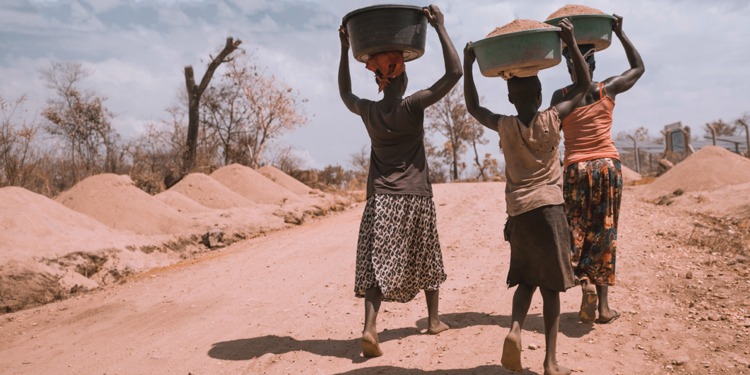The UN Development Programme (UNDP) and the Oxford Poverty and Human Development Initiative (OPHI) at the University of Oxford published a report measuring multidimensional poverty. According to the publication, 25 countries halved their Multidimensional Poverty Index (MPI) in four- to twelve-year periods, which demonstrates that halving poverty according to national definitions within 15 years (SDG target 1.2) is possible.
Titled, “Global Multidimensional Poverty Index 2023: Unstacking Global Poverty: Data for High-impact Action,” the report assesses progress in reducing poverty, going beyond monetary deprivations, for 110 countries.
It is possible to #EndPoverty.
25 countries halved their multidimensional poverty in just 15 years, demonstrating that rapid progress is within reach. Yet, around 1.1 billion people in 111 countries remain poor.
Latest data from @UNDP: https://t.co/QVwTCX8VAG pic.twitter.com/P4kkqMB6VB
— United Nations (@UN) July 11, 2023
Based on the analysis of trends from 2000 to 2022 in 81 countries with comparable data over time, the report finds that 25 countries halved their global MPI values within 15 years. In India alone, 415 million people exited poverty between 2005/2006 and 2019/2021. In China, 69 million left poverty in just four years (2010-2014). Indonesia saw 8 million people rise out of poverty over the course of three years (2012-2017). Other countries that were able to halve their multidimensional poverty rates include Cambodia, Congo, Honduras, Morocco, Serbia, and Viet Nam.
While the lack of post-COVID-19-pandemic data for most of the 110 countries covered in the report makes it difficult to assess immediate prospects, the few countries with data for 2021 or 2022 demonstrate that poverty reduction momentum “may have persisted during the pandemic,” according to a UNDP press release. For example, MPI values for Nigeria, Peru, and Cambodia show significant reductions. In the latter, the incidence of poverty declined from 36.7% to 16.6%, with one in five Cambodians moving out of poverty in just 7.5 years (2014-2021/2022). Among children, progress was even faster, with the incidence of poverty falling from 42.7% in 2014 to 20.5% in 2021/2022.
Despite these achievements, 1.1 billion out of 6.1 billion people across 110 countries (just over 18%) still live in acute multidimensional poverty, according to the report. Approximately five out of six poor people live in Sub-Saharan Africa (534 million) and South Asia (389 million). Almost two-thirds of all poor people (730 million) reside in middle-income countries (MICs). And although low-income countries (LICs) make up only 10% of the population covered by the MPI, they are home to 35% of all poor people.
The report shows that half of all MPI-poor people (566 million) are children under 18 years old. The poverty rate among children is more than double that among adults (27.7% compared to 13.4%). Also, rural areas are poorer than urban areas in all regions, with 84% of all poor people living in rural areas.
Related Articles: Do We Need to Sacrifice Our 1.5 °C Goal to End Poverty? | Poverty in the EU: 20% of Youth at Risk | All SDGs ‘Seriously Off Track,’ UN Report Finds
Highlighting significant and long-lasting consequences of the pandemic for education, Pedro Conceição, Director of the Human Development Report Office, said it is “imperative that we intensify efforts to comprehend the dimensions most negatively affected, necessitating strengthened data collection and policy efforts to get poverty reduction back on track.”
Sabina Alkire, Director of OPHI at the University of Oxford, “call[ed] on funders and data scientists to make a breakthrough on poverty data, so the interconnected deprivations that strike poor people in real time can be tracked – and intercepted.”
The global MPI measures interconnected deprivations across indicators related to SDGs 1 (no poverty), 2 (zero hunger), 3 (good health and well-being), 4 (quality education), 6 (clean water and sanitation), 7 (affordable and clean energy), and 11 (sustainable cities and communities).
The 2023 edition of the Global Multidimensional Poverty Index was launched in the margins of the UN High-level Political Forum on Sustainable Development (HLPF) on 11 July.
— —
This article was originally published by the International Institute for Sustainable Development (IISD) and is republished here as part of an editorial collaboration with IISD.
Editor’s Note: The opinions expressed here by the authors are their own, not those of Impakter.com — In the Featured Photo: Three women carrying basins while walking barefoot, Rhino refugee camp, Arua, Uganda, March 28, 2019. Featured Photo Credit: Ninno JackJr.










